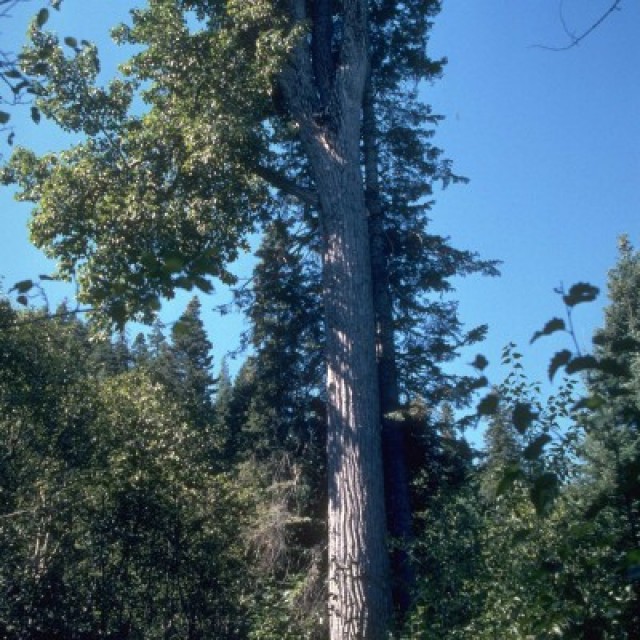COMMON NAME
Black cottonwood
SCIENTIFIC NAME
Populus trichocarpa
ALSO KNOWN AS
California poplar
Plant family
Willow (Salicaceae)
Plant group
Deciduous Trees and Shrubs
At one time considered by botanists to be a subspecies of P. balsamifera, this closely related species differs in having a 3-valved fruit capsule covered in short hairs (balsam poplar has a 2-valved capsule with no hairs).
105 reports
44+
OBSERVERS
105+
OBSERVATIONS
Identification hints
Black cottonwood trees can grow up to 100 ft in height. They often grow along rivers and stream banks. They have both male and female flowers which grow in separate catkins (long, caterpillar-like strands). The flowers generally bloom in the spring before the leaves come out. The time at which the leaves come out is determined in part by photoperiod.
Did you know?
Black cottonwood is distributed in the Pacific Northwest region of the lower 48, Canada, and Alaska, and may form hybrids with balsam poplar in British Columbia and Western Alberta.
DISTRIBUTION IN TH U.S.
Alaska
,
California
,
Idaho
,
Montana
,
North Dakota
,
Nevada
,
Oregon
,
Utah
,
Washington
,
Wyoming
HABITAT
Black cottonwood often grows along rivers and stream banks. It is found in the Pacific Northwest region of the lower 48 states, Canada, and Alaska.
ATTRIBUTES
Leaves
Leaves are simple and alternate. They vary in size and shape on the same tree from broadly triangular (deltoid) to lance-shaped -- longer than they are wide, with a broad base (oval to lance-shaped). Leaves are rounded or heart-shaped (cordate) at the base. They are generally 2.7 to 4.7 in (7 to 12 cm) long and 1.3 to 3 in (3.5 to 7.5 cm) wide. The margins are finely toothed, dark green above, and slightly paler beneath, commonly with whitish or brownish resin blotches, turning yellow in autumn. The leaves are hairless or nearly so. The petioles (the stalk that attaches the leaf to the plant) are round and short (approximately 3 to 4 mm or about a tenth of an inch long). he time at which the leaves come out is determined in part by photoperiod.
Flowers
Tiny, long, slender flowers hang in loose catkins. Male (staminate) and female (pistillate) flowers are found on separate trees (dioecious). Flowering generally occurs from late March to June, just before leaf emergence.
Fruits
Fruits are egg-shaped, green capsules in hanging catkins (long, caterpillar-like structures). Ripe capsules split into 3 parts. Tiny seeds have a tuft of soft, white hairs at the tip and are often dispersed in large, fluffy masses. The fruits ripen about a month after the flowers appear. They generally disperse their seeds between April and July.
Bark
Bark is gray to gray-brown on mature trees and deeply furrowed into flat ridges on older portions of the tree.
See Menu
- 2021 Chicago Botanic Garden. All Rights Reserved.
-
Creative Commons
BY-NC-SA 4.0 - Terms of Use
- Privacy Policy
- Data Sharing and Citation Policies
- 2021 Chicago Botanic Garden. All Rights Reserved.



